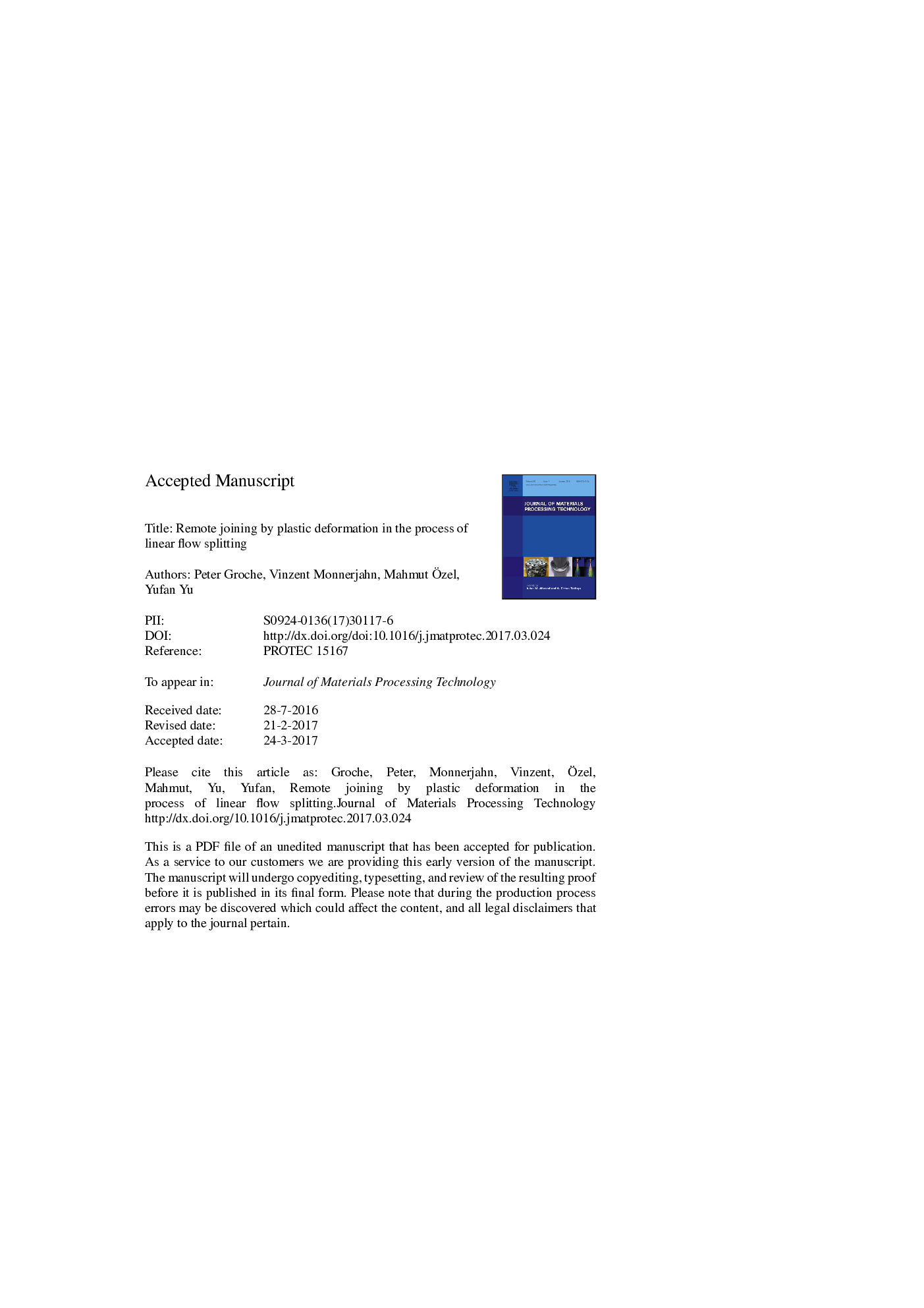| Article ID | Journal | Published Year | Pages | File Type |
|---|---|---|---|---|
| 5018034 | Journal of Materials Processing Technology | 2017 | 14 Pages |
Abstract
Remote joining by plastic deformation in the process of linear flow splitting combines forming with simultaneously activated joining processes. While the forming process takes place in one region of a profile, the joining of the profile with another component occurs outside the forming zone. This approach promises a great potential with regard to joining multi-material units in a short process chain. Linear flow splitting is a rolling process which results in thin-walled and branched parts out of flat sheet metals without any heat treatment. As in other forming processes, residual stresses remain in the manufactured parts. They are used in the study at hand for a mechanical joining of the profile with other components. Based on numerical and experimental results, two models of joining mechanisms based on spatially distributed, uniaxial tensile and compressive stresses are presented and verified. The remote joining approach described in this paper accommodates two challenges of modern manufacturing: On the one hand, the increasing market demands for lightweight products which lead to various material combinations and hybrid structures in complex assembly units; on the other hand, the need for continuous optimization of process chains with regard to efficiency.
Keywords
Related Topics
Physical Sciences and Engineering
Engineering
Industrial and Manufacturing Engineering
Authors
Peter Groche, Vinzent Monnerjahn, Mahmut Ãzel, Yufan Yu,
